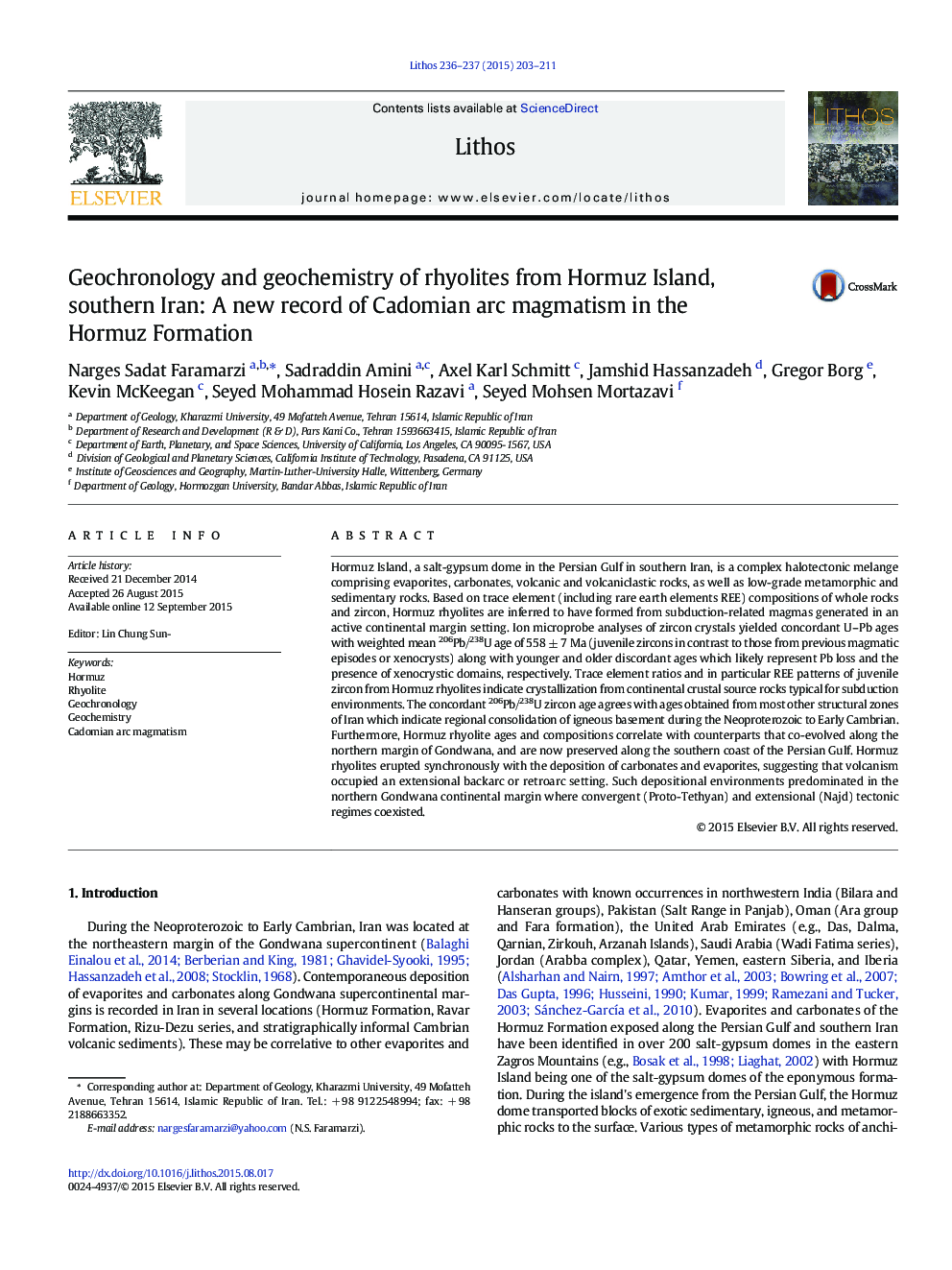| کد مقاله | کد نشریه | سال انتشار | مقاله انگلیسی | نسخه تمام متن |
|---|---|---|---|---|
| 4715605 | 1638656 | 2015 | 9 صفحه PDF | دانلود رایگان |

• Halokinetically emplaced rhyolite fragments are described for Hormuz island, Iran.
• Zircon U–Pb ages reveal Neoproterozoic/Early Cambrian (558 ± 7 Ma) rhyolite volcanism.
• Ages permit correlation with igneous rocks formed along northern margin of Gondwana.
• Zircon trace elements demonstrate magma origins at active continental margin.
• Rhyolites and evaporites co-deposited in extensional back/retro arc setting.
Hormuz Island, a salt-gypsum dome in the Persian Gulf in southern Iran, is a complex halotectonic melange comprising evaporites, carbonates, volcanic and volcaniclastic rocks, as well as low-grade metamorphic and sedimentary rocks. Based on trace element (including rare earth elements REE) compositions of whole rocks and zircon, Hormuz rhyolites are inferred to have formed from subduction-related magmas generated in an active continental margin setting. Ion microprobe analyses of zircon crystals yielded concordant U–Pb ages with weighted mean 206Pb/238U age of 558 ± 7 Ma (juvenile zircons in contrast to those from previous magmatic episodes or xenocrysts) along with younger and older discordant ages which likely represent Pb loss and the presence of xenocrystic domains, respectively. Trace element ratios and in particular REE patterns of juvenile zircon from Hormuz rhyolites indicate crystallization from continental crustal source rocks typical for subduction environments. The concordant 206Pb/238U zircon age agrees with ages obtained from most other structural zones of Iran which indicate regional consolidation of igneous basement during the Neoproterozoic to Early Cambrian. Furthermore, Hormuz rhyolite ages and compositions correlate with counterparts that co-evolved along the northern margin of Gondwana, and are now preserved along the southern coast of the Persian Gulf. Hormuz rhyolites erupted synchronously with the deposition of carbonates and evaporites, suggesting that volcanism occupied an extensional backarc or retroarc setting. Such depositional environments predominated in the northern Gondwana continental margin where convergent (Proto-Tethyan) and extensional (Najd) tectonic regimes coexisted.
Journal: Lithos - Volumes 236–237, November 2015, Pages 203–211